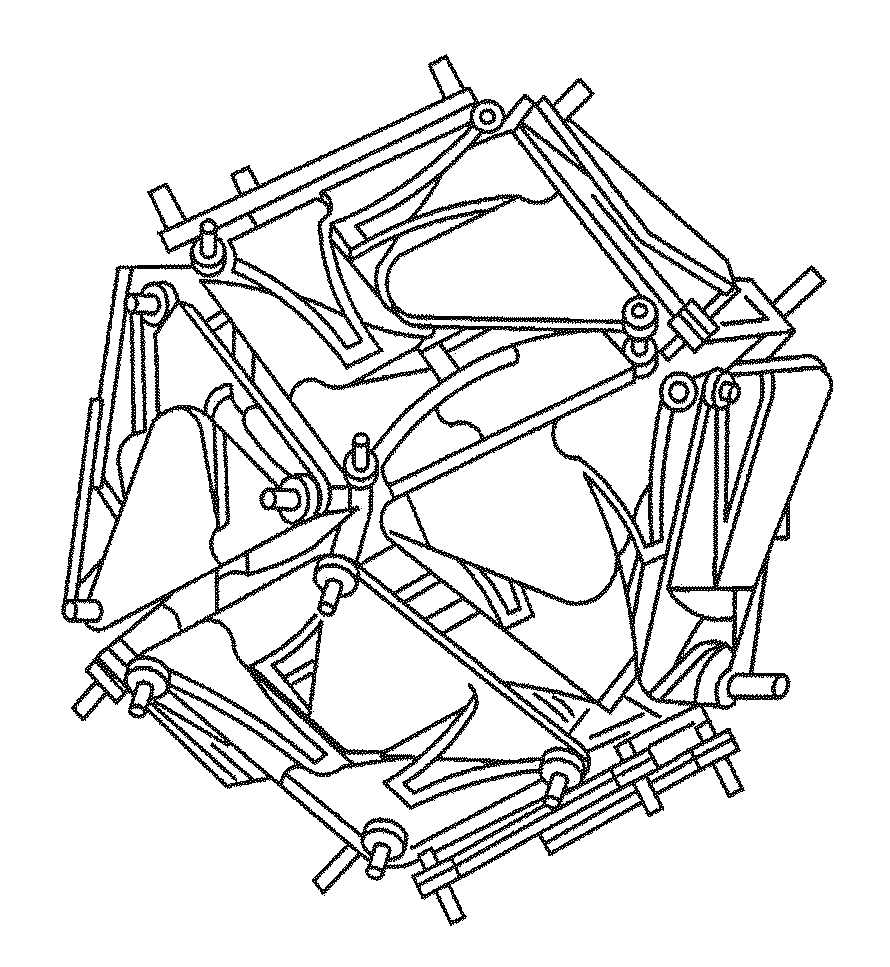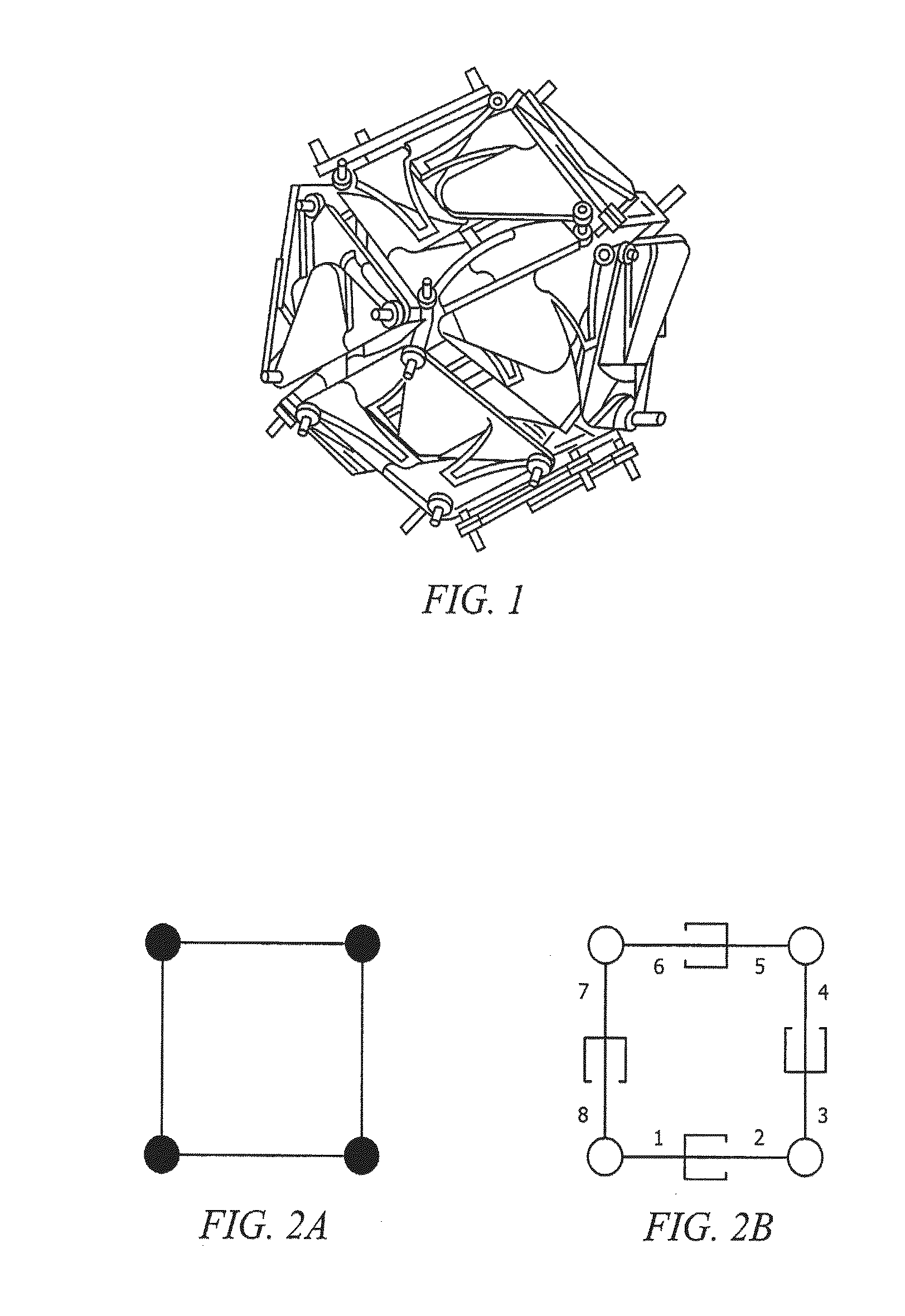Shape-shifting surfaces
a technology of shape-shifting surfaces and surfaces, applied in the field of surface, can solve the problems of limited, albeit known, accuracy, model accuracy, and inability to accurately identify between flexure geometries and rigid-body mechanisms, and achieve the effect of identical to those produced more quickly
- Summary
- Abstract
- Description
- Claims
- Application Information
AI Technical Summary
Benefits of technology
Problems solved by technology
Method used
Image
Examples
Embodiment Construction
[0065]A shape-shifting surface, a coined term, is a novel flat or curved surface that can change its shape (including its area and the orientation of internal lines) while maintaining integrity against various forms of external assaults. Shape-shifting surfaces have potential utility in products as diverse as containers, shielding, furniture, architectural elements, clothing, exercise equipment, and children's toys.
[0066]Shape-shifting surfaces may also have applications in the fields of reconfigurable robotic systems such as claytronics, programmable matter, and digital clay. An important distinction is that shape-shifting surfaces are functional without any actuation. Shape-shifting surfaces include compliant mechanisms so a rich variety of passive behaviors can be designed into them without the inherent expense of large numbers of actuators and processors.
[0067]The novel shape-shifting surface concept disclosed herein offers the first plausible workaround to Guass's result: shape...
PUM
| Property | Measurement | Unit |
|---|---|---|
| angle | aaaaa | aaaaa |
| unit cell | aaaaa | aaaaa |
| shape | aaaaa | aaaaa |
Abstract
Description
Claims
Application Information
 Login to View More
Login to View More - R&D
- Intellectual Property
- Life Sciences
- Materials
- Tech Scout
- Unparalleled Data Quality
- Higher Quality Content
- 60% Fewer Hallucinations
Browse by: Latest US Patents, China's latest patents, Technical Efficacy Thesaurus, Application Domain, Technology Topic, Popular Technical Reports.
© 2025 PatSnap. All rights reserved.Legal|Privacy policy|Modern Slavery Act Transparency Statement|Sitemap|About US| Contact US: help@patsnap.com



